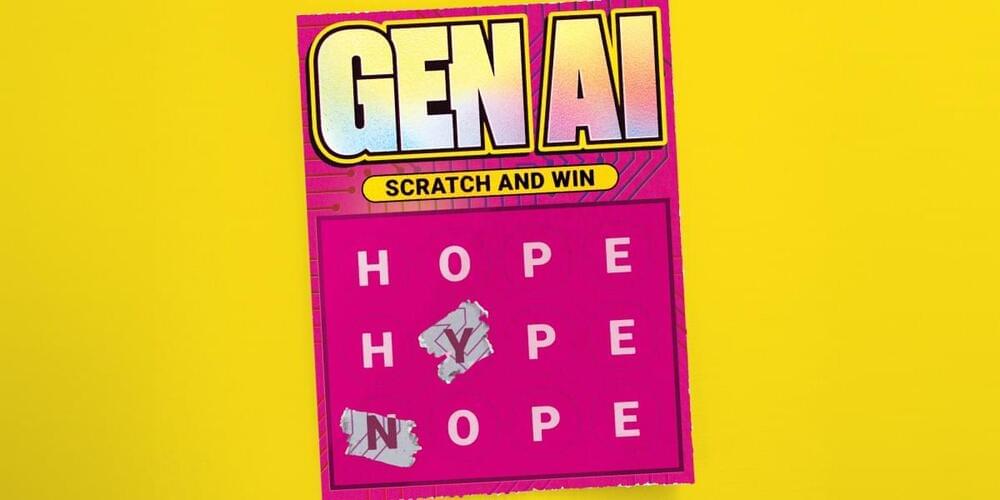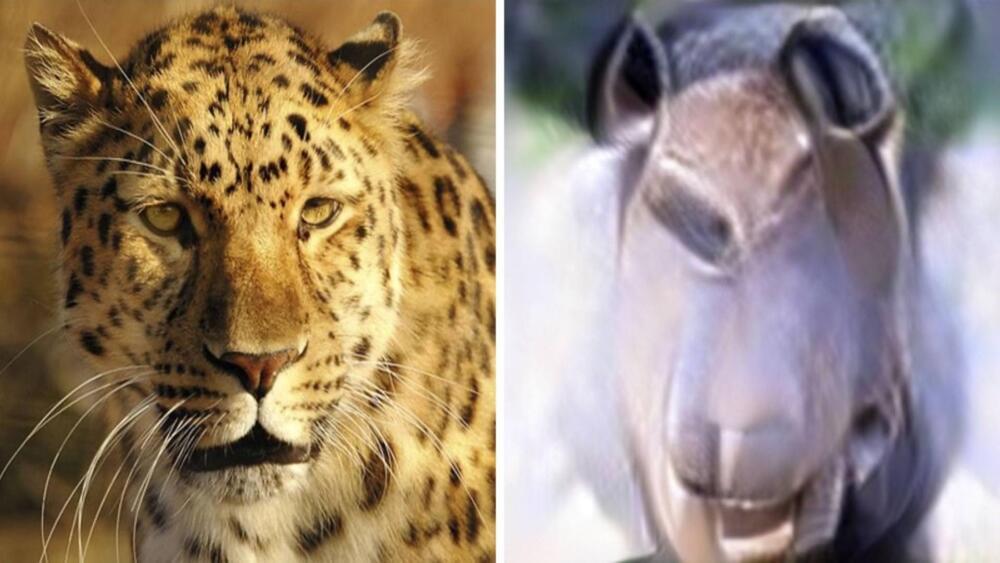Generative AI took the world by storm in 2023. Its future—and ours—will be shaped by what we do next.


In this episode, my guest is Dr. Robert Lustig, M.D., neuroendocrinologist, professor of pediatrics at the University of California, San Francisco (UCSF), and a bestselling author on nutrition and metabolic health. We address the “calories in-calories out” (CICO) model of metabolism and weight regulation and how specific macronutrients (protein, fat, carbohydrates), fiber and sugar can modify the CICO equation. We cover how different types of sugars, specifically fructose, sugars found in liquid form, taste intensity, and other factors impact insulin levels, liver, kidney, and metabolic health. We also explore how fructose in non-fruit sources can be addictive (acting similarly to drugs of abuse) and how sugar alters brain circuits related to food cravings and satisfaction. We discuss the role of sugar in childhood and adult obesity, gut health and disease and mental health. We also discuss how the food industry uses refined sugars to create pseudo foods and what these do to the brain and body. This episode is replete with actionable information about sugar and metabolism, weight control, brain health and body composition. It ought to be of interest to anyone seeking to understand how specific food choices impact the immediate and long-term health of the brain and body. For the show notes, including referenced articles and additional resources, please visit https://www.hubermanlab.com/episode/dr-robert-lustig-how-sug…our-health Thank you to our sponsors AG1: https://drinkag1.com/huberman Eight Sleep: https://eightsleep.com/huberman Levels: https://levels.link/huberman AeroPress: https://aeropress.com/huberman LMNT: https://drinklmnt.com/huberman Momentous: https://livemomentous.com/huberman Huberman Lab Social & Website Instagram: https://www.instagram.com/hubermanlab Twitter: https://twitter.com/hubermanlab Facebook: https://www.facebook.com/hubermanlab TikTok: https://www.tiktok.com/@hubermanlab LinkedIn: https://www.linkedin.com/in/andrew-huberman Website: https://www.hubermanlab.com Newsletter: https://www.hubermanlab.com/newsletter Dr. Robert Lustig Website: https://robertlustig.com Books: https://robertlustig.com/books Publications: https://robertlustig.com/publications Blog: https://robertlustig.com/blog UCSF academic profile: https://profiles.ucsf.edu/robert.lustig Metabolical (book): https://amzn.to/48mNhOE SugarScience: http://sugarscience.ucsf.edu X: https://twitter.com/RobertLustigMD Facebook: https://www.facebook.com/DrRobertLustig LinkedIn: https://www.linkedin.com/in/robert-lustig-8904245 Instagram: https://www.instagram.com/robertlustigmd Threads: https://www.threads.net/@robertlustigmd Timestamps 00:00:00 Dr. Robert Lustig 00:02:02 Sponsors: Eight Sleep, Levels & AeroPress 00:06:41 Calories, Fiber 00:12:15 Calories, Protein & Fat, Trans Fats 00:18:23 Carbohydrate Calories, Glucose vs. Fructose, Fruit, Processed Foods 00:26:43 Fructose, Mitochondria & Metabolic Health 00:31:54 Trans Fats; Food Industry & Language 00:35:33 Sponsor: AG1 00:37:04 Glucose, Insulin, Muscle 00:42:31 Insulin & Cell Growth vs. Burn; Oxygen & Cell Growth, Cancer 00:51:14 Glucose vs. Fructose, Uric Acid; “Leaky Gut” & Inflammation 01:00:51 Supporting the Gut Microbiome, Fasting 01:04:13 Highly Processed Foods, Sugars; “Price Elasticity” & Food Industry 01:10:28 Sponsor: LMNT 01:11:51 Processed Foods & Added Sugars 01:14:19 Sugars, High-Fructose Corn Syrup 01:18:16 Food Industry & Added Sugar, Personal Responsibility, Public Health 01:30:04 Obesity, Diabetes, “Hidden” Sugars 01:34:57 Diet, Insulin & Sugars 01:38:20 Tools: NOVA Food Classification; Perfact Recommendations 01:43:46 Meat & Metabolic Health, Eggs, Fish 01:46:44 Sources of Omega-3s; Vitamin C & Vitamin D 01:52:37 Tool: Reduce Inflammation; Sugars, Cortisol & Stress 01:59:12 Food Industry, Big Pharma & Government; Statins 02:06:55 Public Health Shifts, Rebellion, Sugar Tax, Hidden Sugars 02:12:58 Real Food Movement, Public School Lunches & Processed Foods 02:18:25 3 Fat Types & Metabolic Health; Sugar, Alcohol & Stress 02:26:40 Artificial & Non-Caloric Sweeteners, Insulin & Weight Gain 02:34:32 Re-Engineering Ultra-Processed Food 02:38:45 Sugar & Addiction, Caffeine 02:45:18 GLP-1, Semaglutide (Ozempic, Wegovy, Tirzepatide), Risks; Big Pharma 02:57:39 Obesity & Sugar Addiction; Brain Re-Mapping, Insulin & Leptin Resistance 03:03:31 Fructose & Addiction, Personal Responsibility & Tobacco 03:07:27 Food Choices: Fruit, Rice, Tomato Sauce, Bread, Meats, Fermented Foods 03:12:54 Intermittent Fasting, Diet Soda, Food Combinations, Fiber, Food Labels 03:19:14 Improving Health, Advocacy, School Lunches, Hidden Sugars 03:26:55 Zero-Cost Support, Spotify & Apple Reviews, YouTube Feedback, Sponsors, Momentous, Social Media, Neural Network Newsletter #HubermanLab #Science #Nutrition Title Card Photo Credit: Mike Blabac — https://www.blabacphoto.com Disclaimer: https://hubermanlab.com/disclaimer

Neuromorphic computers are based on intricate networks of simple, elementary processors (which act like the brain’s neurons and synapses). The main advantage of this is that these machines are inherently “parallel”.
This means that, as with neurons and synapses, virtually all the processors in a computer can potentially be operating simultaneously, communicating in tandem.
In addition, because the computations performed by individual neurons and synapses are very simple compared with traditional computers, the energy consumption is orders of magnitude smaller. Although neurons are sometimes thought of as processing units, and synapses as memory units, they contribute to both processing and storage. In other words, data is already located where the computation requires it.


Intel’s Gaudi 3 AI accelerator reportedly employs the TSMC 5nm process and is expected to compete with NVIDIA H100 & AMD MI300X.
Intel Leverages TSMC’s 5nm Node For Gaudi 3 Accelerator, Launches Next Year To Compete Against NVIDIA H100 & AMD MI300X
Alongside the unveiling of Intel’s 5th-Gen Xeon Scalable and Core Ultra “Meteor Lake” CPUs, CEO Pat Gelsinger provided a small glimpse at the company’s next-gen AI accelerator, without giving out specifics about it. However, reports from the Korean media have revealed what Team Blue’s Gaudi 3 accelerator could bring on board, and it is expected to compete with NVIDIA’s H100 and AMD’s Instinct MI300X AI GPUs in terms of AI performance.

A new study in Nature reports an AI-driven advance in biotechnology with implications for drug development, disease detection, and environmental monitoring. Scientists at the Institute for Protein Design at the University of Washington School of Medicine used software to create protein molecules that bind with exceptionally high affinity and specificity to a variety of challenging biomarkers, including human hormones.
Notably, the scientists achieved the highest interaction strength ever reported between a computer-generated biomolecule and its target.
Senior author David Baker, professor of biochemistry at UW Medicine and Howard Hughes Medical Institute investigator, emphasized the potential impact: “The ability to generate novel proteins with such high binding affinity and specificity opens up a world of possibilities, from new disease treatments to advanced diagnostics.”



Juan Bernabé-Moreno is IBM’s director of research for Ireland and the United Kingdom. The Spanish computer scientist is also responsible for IBM’s climate and sustainability strategy, which is being developed by seven global laboratories using artificial intelligence (AI) and quantum computing. He believes quantum computing is better suited to understanding nature and matter than classical or traditional computers.
Question. Is artificial intelligence a threat to humanity?
Answer. Artificial intelligence can be used to cause harm, but it’s crucial to distinguish between intentional and malicious use of AI, and unintended behavior due to lack of data control or governance rigor.

Electronics that mimic the treelike branches that form the network neurons use to communicate with each other could lead to artificial intelligence that no longer requires the megawatts of power available in the cloud. AI will then be able to run on the watts that can be drawn from the battery in a smartphone, a new study suggests.
As the brain-imitating AI systems known as neural networks grow in size and power, they are becoming more expensive and energy-hungry. For instance, to train its state-of-the-art neural network GPT-3, OpenAI spent US $4.6 million to run 9,200 GPUs for two weeks. Generating the energy that GPT-3 consumed during training released as much carbon as 1,300 cars would have spewed from their tailpipes over the same time, says study author Kwabena Boahen, a neuromorphic engineer at Stanford University, in California.
Now Boahen proposes a way for AI systems to boost the amount of information conveyed in each signal they transmit. This could reduce both the energy and space they currently demand, he says.